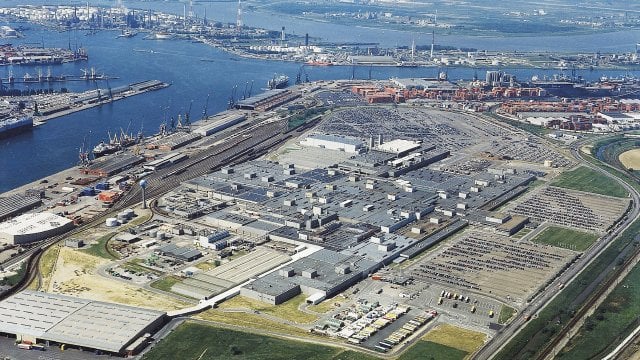
About Triple Helix Molecule as a Service
- Founders: Steven Peleman, Sofie Baeten, Denis Hicks
- Founded in: 2021
- Employees: 30 (uiteindelijk)
- Money raised: 60 million
- Ultimate goal: Making all PU foams in the world recyclable.
It is still a long way off in the future. But the Belgian start-up ‘Triple Helix Molecules as a Service‘ wants to build a factory on the old Opel site in Antwerp by 2024 to recycle polyurethane foam. The plant should be able to process 30,000 tonnes of waste. It entails an investment of €60 million.
The factory will give a second lease of life to polyurethane foam, which comes from mattresses, insulation panels and car seats, among other things. The resultant pure chemicals can then be reused, including in the production of new polyurethane products. The factory will operate in a fully circular manner, supply its own energy needs and will also run without producing any waste. The company is setting up in NextGen District, the future hotspot for circular economy in the Belgian port of Antwerp. The American multinational Bolder Industries, a pioneer in the field of sustainable chemical production that is founded on discarded car tires, also wants to establish themselves there. Steven Peleman, CEO of Triple Helix, explains.
How did you come up with the idea of founding ‘Triple Helix Molecule as a Service’?
“During my career, I have sat on different sides of the materials value chain. With material producers, machine builders as well as end markets such as automotive and construction. It is very difficult to get large companies to change direction at short notice. Things change much too slowly and are driven by short-term financial results.
Consultancy firms, on the other hand, have the networks but not the mandate to take any risks themselves. So I have experienced from different perspectives what does and does not work in order to push through a transformation. That’s why I finally asked myself what it would take to really get more circular material cycles into the world. That’s where the idea of ‘molecules as a service’ came from. Instead of writing reports on that or advising what others should do, I thought: we should just go ahead and do it ourselves.”

What does the project involve?
“The idea is to bring new circular solutions to the market in a systematic way. We are focusing on those themes that are relevant when it comes to making material cycles circular. This is how we demonstrate the principle of material reincarnation to the world. Drastically reducing emissions and waste pollution can only be achieved in this way. In our factory at NextGen District, we want to break down polyurethane foams into their essential components at the end of their life cycle so these can be used again in new products. That is innovative and challenging. But with the Port of Antwerp, BlueChem and our industrial and knowledge partners, we are coming in with the strongest line-up. Not words but deeds!”
You are especially interested in recycling polyurethane foam (PU foam). Why?
“It is a valuable and extremely important industrial material that will be used even more in the years to come because, for example, it is the best thermal insulator. However, PU has an end-of-life problem in the sense that today almost all foams are incinerated. Alternatives have hardly ever been developed. It also requires the right expertise to recycle PU in the first place. Only one million tonnes are recycled out of the 22 million tonnes produced per year. In Europe alone, there could be about 600,000 tonnes of foam available for recycling. If incineration and landfill are no longer options, this means that a global market for PU foam of US$75 billion is at risk. Therefore, a solution is important and a matter of urgency.”
So you are going to build a proper factory. What does that entail?
“We will build the factory and operate it ourselves for a period of at least 30 years. The idea is that we will demonstrate on an industrial scale the profitability and the feasibility of upcycling polyurethane (PU) in a chemical way so that nothing goes to waste. We are going to process PU waste streams 100 percent into new products by chemically splitting them into reusable components. Reuse, by the way, does not have to be the same kind of applications. It is innovative because it has never been done like this before on an industrial scale. The intention is for us to become a zero-waste company. Of course, a lot of scale development will also have to take place, so that all the different foams can be processed back into new raw materials.”
Do you see any other opportunities in the future as well?
“We are going to build the factory and operate it ourselves for a period of at least 30 years. The idea is that we will demonstrate on an industrial scale the profitability and feasibility of upcycling polyurethane (PU) in a chemical method so that nothing goes to waste. We are going to process PU waste streams 100 percent into new products by chemically splitting them into reusable components. Reuse, by the way, does not have to be in the same kinds of applications. It is innovative because it has never been done like this before on an industrial scale. Our aim is to become a zero-waste company. Of course, a lot of scale engineering will have to be done, so that all the different foams can be processed back into new raw materials. “


